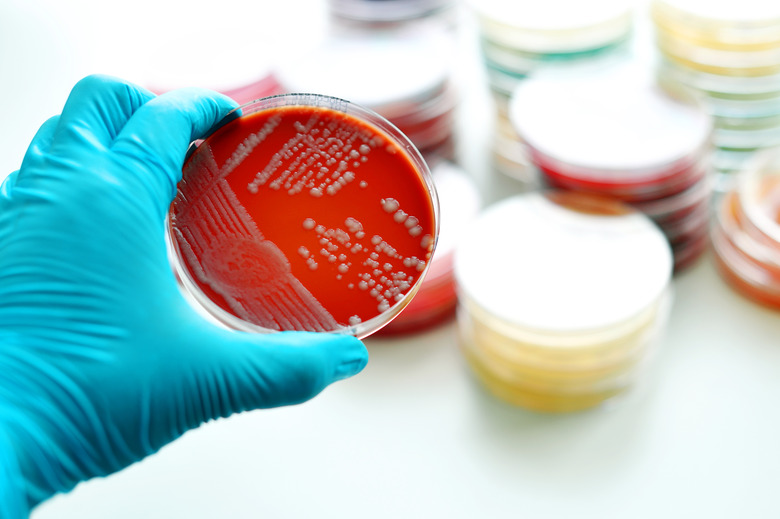What Are Agar Slants?
Agar, a gelatin-like substance extracted from red algae, is commonly used to culture microorganisms. Various nutrients are added to agar to enhance the growth of bacteria in either shallow plates or test tubes. When agar media is placed in test tubes it is in liquid form. The test tubes are placed on an angle to cool and congeal, creating a slanted surface, or an agar slant.
TL;DR (Too Long; Didn't Read)
Agar can be used to culture microbes, and agar slants are designed to allow for more growth, since the slant increases the medium's surface area.
Agar
Agar
Agar is a substance extracted from the cell walls of red algae. While it is commonly used to grow bacteriological cultures, the agar must be impregnated with nutrients such as beef extract and peptone in order to support life. Various substances mixed into the agar promote the growth of very specific types of bacteria. For instance, mannitol salt agar, which contains sodium chloride, favors the growth of only staphylococcus bacteria and can differentiate between pathogenic and non-pathogenic strains.
Slanting
Slanting
Agar slants are created by bringing agar to the boiling point and pouring it into a test tube. Before the agar cools and solidifies, the test tube is set on its side. Once the agar is cooled, the test tube can be stored upright, and the agar inside has a slanted appearance.
Advantages
Advantages
Slanting the surface of the agar gives the bacteria a greater surface area on which to grow in a test tube. Furthermore, slants are created in test tubes that can be capped, which minimizes water loss. This is important because of the high moisture content of agar media.
Uses
Uses
Agar slants can be used to culture bacterial cells for identification. Attempting to identify bacteria from a large sample is difficult because bacteria are small and can be difficult to find. However, when placed on a nutrient agar slant, bacterial cells will divide quickly and within several hours will have produced enough cells to examine microscopically. Agar slants are also useful in maintaining bacterial cultures, more so than stacks of Petri dishes. Multiple cultures are easily placed into test tube racks and stored under refrigeration.
References
Cite This Article
MLA
Lehman, Christine. "What Are Agar Slants?" sciencing.com, https://www.sciencing.com/agar-slants-8538817/. 26 April 2018.
APA
Lehman, Christine. (2018, April 26). What Are Agar Slants?. sciencing.com. Retrieved from https://www.sciencing.com/agar-slants-8538817/
Chicago
Lehman, Christine. What Are Agar Slants? last modified March 24, 2022. https://www.sciencing.com/agar-slants-8538817/
